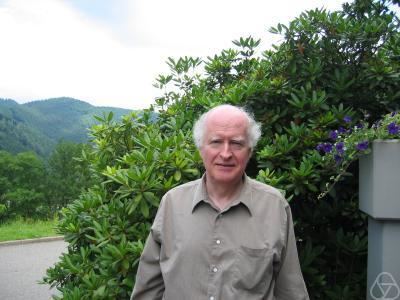Nationality American Name John Mather | Role Mathematician Doctoral students Giovanni Forni | |
 | ||
Born June 9, 1942 (age 83) Los Angeles, California ( 1942-06-09 ) Institutions IHESHarvard UniversityPrinceton University Alma mater Harvard UniversityPrinceton University Known for Smooth functionsTopologically stratified space Notable awards John J. Carty Award for the Advancement of Science (1978)National Order of Scientific Merit (Brazil) (2000)George David Birkhoff Prize (2003) Awards John J. Carty Award for the Advancement of Science, Guggenheim Fellowship for Natural Sciences, US & Canada | ||
Residence United States of America | ||
John Norman Mather (June 9, 1942 – January 28, 2017) was a mathematician at Princeton University known for his work on singularity theory and Hamiltonian dynamics. He was descended from Atherton Mather (1663-1734), a cousin of Cotton Mather.
His early work dealt with the stability of smooth mappings between smooth manifolds of dimensions n (for the source manifold N) and p (for the target manifold P). He determined the precise dimensions (n,p) for which smooth mappings are stable with respect to smooth equivalence by diffeomorphisms of the source and target (i.e. infinitely differentiable coordinate changes).
He also proved the conjecture of the French topologist René Thom that under topological equivalence smooth mappings are generically stable: the subset of the space of smooth mappings between two smooth manifolds consisting of the topologically stable mappings is a dense subset in the smooth Whitney topology. His notes on the topic of topological stability are still a standard reference on the topic of topologically stratified spaces.
Since 1970s, he switched to the field of dynamical systems. He made the following main contributions to dynamical systems that deeply influenced the field.
1. He introduced the concept of Mather spectrum and gave a characterization of Anosov diffeomorphism.
2. Jointly with Richard McGehee, he gave an example of collinear four-body problem which has initial conditions leading to solutions that blow up in finite time. This was the first result that made the Painleve conjecture plausible.
3. He developed a variational theory for the globally action minimizing orbits for twist maps (convex Hamiltonian systems of two degrees of freedom), along the line of the work of G. D. Birkhoff, M. Morse, G. A. Hedlund, et al. This theory is now known as the Aubry-Mather theory.
4. He developed the Aubry-Mather theory to the higher dimensional case which is now called the Mather theory. This theory turned out to be deeply related to the viscosity solution theory of Michael G. Crandall, Pierre-Louis Lions et al. for Hamilton-Jacobi equation. The link was revealed in the weak KAM theory of Albert Fathi.
He was one of the three editors of the PRINCETON MATH series in Annals of Mathematics Studies.
He was a member of the National Academy of Sciences beginning in 1988. He received the John J. Carty Award of the National Academy of Sciences in 1978 (for pure mathematics) and the George David Birkhoff Prize in Applied Mathematics in 2003. He also received the Brazilian Order of Scientific Merit in 2000 and in 2014 the Brouwer Medal from the Royal Dutch Mathematical Society.
